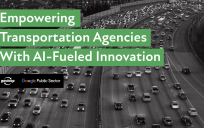Human-centered design (HCD) is an IT modernization practice that incorporates tangible user feedback to ensure that technologies meet the needs of users. It prioritizes the needs, behaviors, and experiences of users throughout the software development lifecycle. This approach has proven to be critical in meeting customer service and efficiency goals.

Government services are often used by people in vulnerable, high-stakes situations — applying for benefits, renewing a license, or seeking public health information. Poorly designed systems can create barriers, increase administrative burden, and erode trust. HCD helps agencies improve satisfaction and compliance via solutions that are less error-prone and require less help-desk support.
What Does HCD Development Look Like?
Rather than starting with a focus on the technology components of a solution, HCD begins with understanding the people who will use the service. Software development utilizing HCD follows a basic flow:
- Inspiration: Engage directly with users through interviews, observation, and surveys to uncover their real needs and challenges. This research creates an understanding of and empathy with users that will then drive development.
- Ideation: This is the traditional development phase that translates insights gained into the actual design, wireframes, and early prototypes that can be quickly tested.
- Implementation: Once the solution is in production, the work does not end. HCD solutions are continuously refined through usability testing and feedback, ensuring they actually work for the intended users.
There are a number of examples of HCD-led projects in government that have helped improve efficiency and trust, including:
- The Department of Veterans Affairs using HCD to overhaul its health-appointment scheduling system. By conducting user interviews with veterans and healthcare workers, the VA redesigned the system to be significantly more intuitive and responsive, resulting in fewer no-shows and faster appointment booking.
- Citizenship and Immigration Services improving the immigration process by redesigning forms and streamlining online services based on direct user interviews and usability testing. They reduced form errors and improved application success rates.
- The City of Boston applying HCD in redesigning Boston.gov. Instead of starting with department goals, they engaged residents in workshops and prototyping sessions. The result is a site that’s cleaner, mobile-friendly, and makes it easier for residents to find services that help them pay parking tickets, report issues, and more.
Shifting to HCD
As with any new development approach, start small when shifting to an HCD methodology. Pilot the approach on a single project or feature. Choosing a project with high visibility will help demonstrate the value of the approach and accelerate adoption across the agency.
To ensure the success of pilots, build a cross-functional team that includes designers, developers, subject matter experts, and end-users engaging in open communication and shared ownership of outcomes. Upskill this team with workshops or partnerships to help them understand and embrace tools like journey mapping, service blueprints, and accessibility audits.
Ensure your teams are prepared to iterate quickly, utilizing feedback from real users early and often. Use low-fidelity prototypes to test ideas before fully building them. This allows you to adjust course without wasting time and resources.
Transitioning to a human-centered design approach doesn’t require overhauling your entire agency overnight. It starts with a mindset shift — from designing for compliance to designing for real human needs. In doing so, government agencies can deliver services that are not only efficient and compliant but also trusted, accessible, and truly impactful.
As the founder of GovEvents and GovWhitePapers, Kerry is on a mission to help businesses interact with, evolve, and serve the government. With 25+ years of experience in the information technology and government industries, Kerry drives the overall strategy and oversees operations for both companies. She has also served in executive marketing roles at a number of government IT providers.





Leave a Reply
You must be logged in to post a comment.